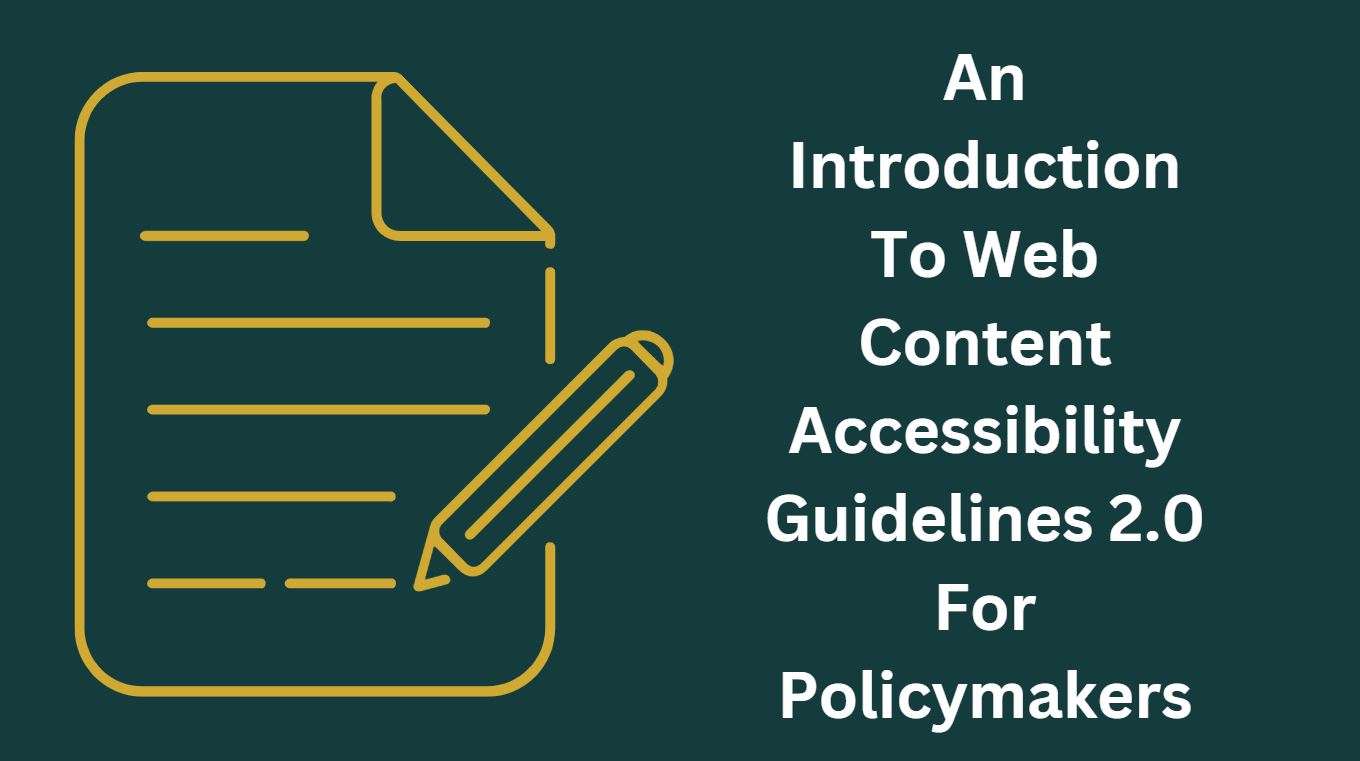- Likes
- Followers
- Followers
- Followers
- Subscribers
- Followers
- Members
- Followers
- Members
- Subscribers
- Subscribers
- Posts
- Comments
- Members
- Subscribe
An Introduction To Web Content Accessibility Guidelines 2.0 For Policymakers

WCAG 2.0 (Web Content Accessibility Guidelines 2.0) by W3C comprehensively covers the recommendations for preparing web content and media accessible to all. Being compliant with these guidelines may further ensure that your web content is accessible to people having disabilities too like impaired vision, hearing, cognitive skills, learning disabilities, movement restrictions, speech troubles, photo-sensitivity, or a combination of these.
WCAG 2.0 now succeeds WCAG 1.0, with updated content. Apart from enhanced accessibility, following such guidelines will also ensure that the web content is more acceptable to the search engines too.
WCAG 2.0 Guidance
Organizations and individuals who follow WCAG guidelines vary from corporate business to individual web developers, developers, marketers, purchasing agents, policy decision makers to even the teachers or students. To meet the varying requirement of all types of audience, there are many layers of guidance put forth by WCAG including primary principles, guidelines, testable criteria, and a rich collection of:
- Advisory Techniques
- Sufficient regulations
- Documented failures
- Resource links, and
- Fair code.
Posts You May Like
Categories of WCAG 2.0
-
- Principles There are four principles which act as the foundation of web accessibility as:
-
-
- Perceivable
- Operable
- Understandable, and
- Robust
- Guidelines There are 12 sets of guidelines of web content accessibility guidelines 2.0 act as the base contributors for policymakers to ensure that the web content is accessible to all types of users with varying abilities. These non-testable guidelines provide a solid framework for accessibility with an objective to help the authors to understand the success of their work and implement techniques more effectively.
- Success criteria Testable success criterion of WCAG 2.0 are defined against each guideline for the others to run conformance testing for design specifications, regulation, purchasing, and for contractual agreements. To meet the needs of varying category users under different situations, there are three conformance levels set as:
-
-
-
- A – the lowest conformance followed by
- AA, and
- AAA – the highest.
- Advisory techniques For each of the 12 guidelines and success conformance, there is a range of informative techniques, which fall into two categories for meeting all the success criteria and also those which are advisory. Advisory techniques go par the needs of individual success and let the authors to more effectively address WCAG guidelines. Some of these techniques address the barriers inaccessibility which cannot be measured through the testable success criteria.
-
All of these layers of accessibility including the principle, guideline, success criterion, and advisory techniques come together to offer appropriate inputs to the policymakers in terms of web design and development to make the content more accessible by being compliant with the WCAG 2.0 standards. The authors are encouraged to test and apply all these layers properly to their level best including advisory techniques to best address the requirements of widest possible users.
However, it should be noted that even the content which conforms AAA – the highest level – it may not be accessible to users of all types with varying degrees of disabilities or combinations of these. It remains a challenge to address the issues related to the cognitive language abilities and learning disability areas. So, the policymakers are encouraged to consider advanced advisory techniques further as well as to seek advice on the industry best practice to optimize web content accessible to the community as far as possible.
Image credit- Canva


Comments are closed.